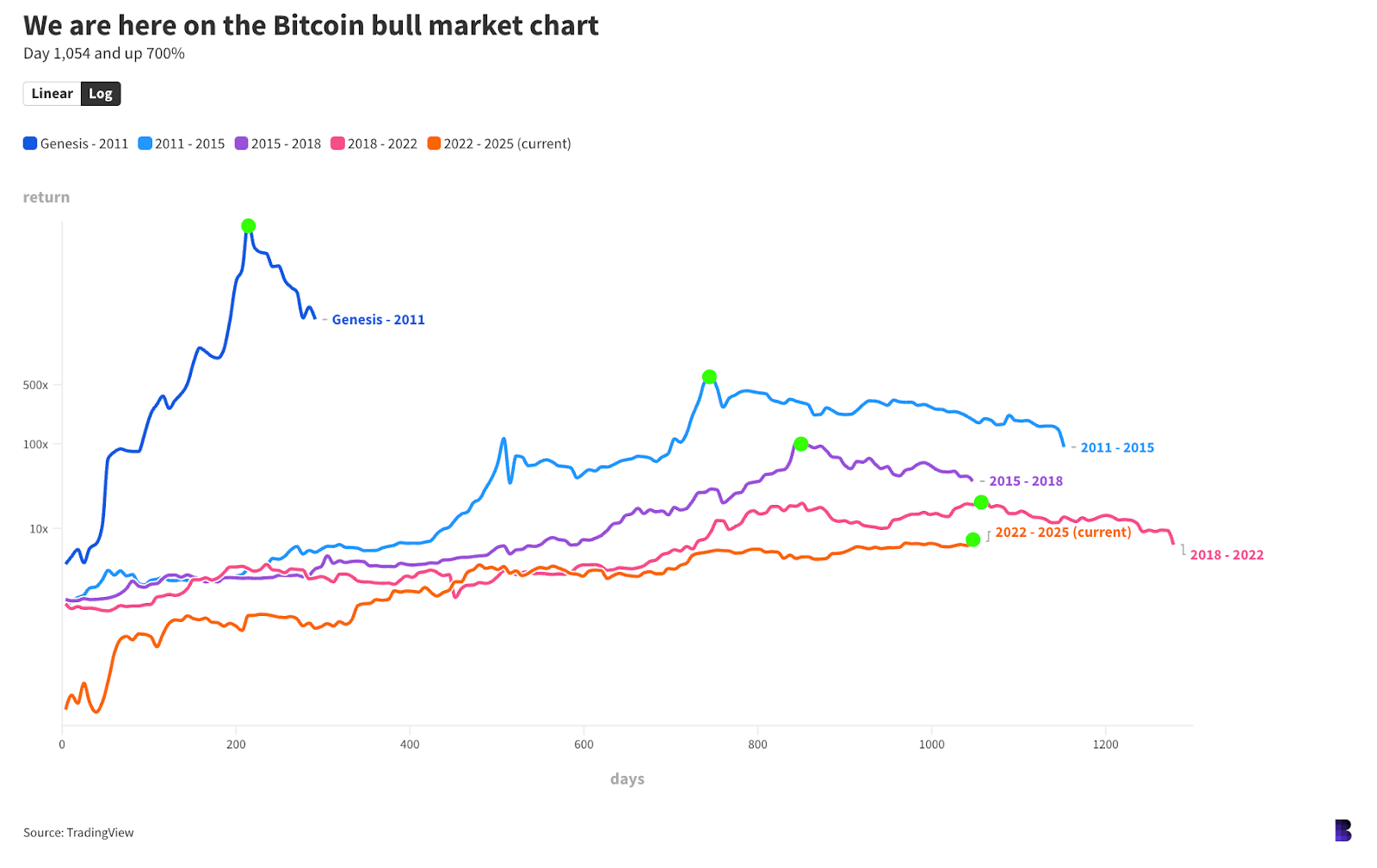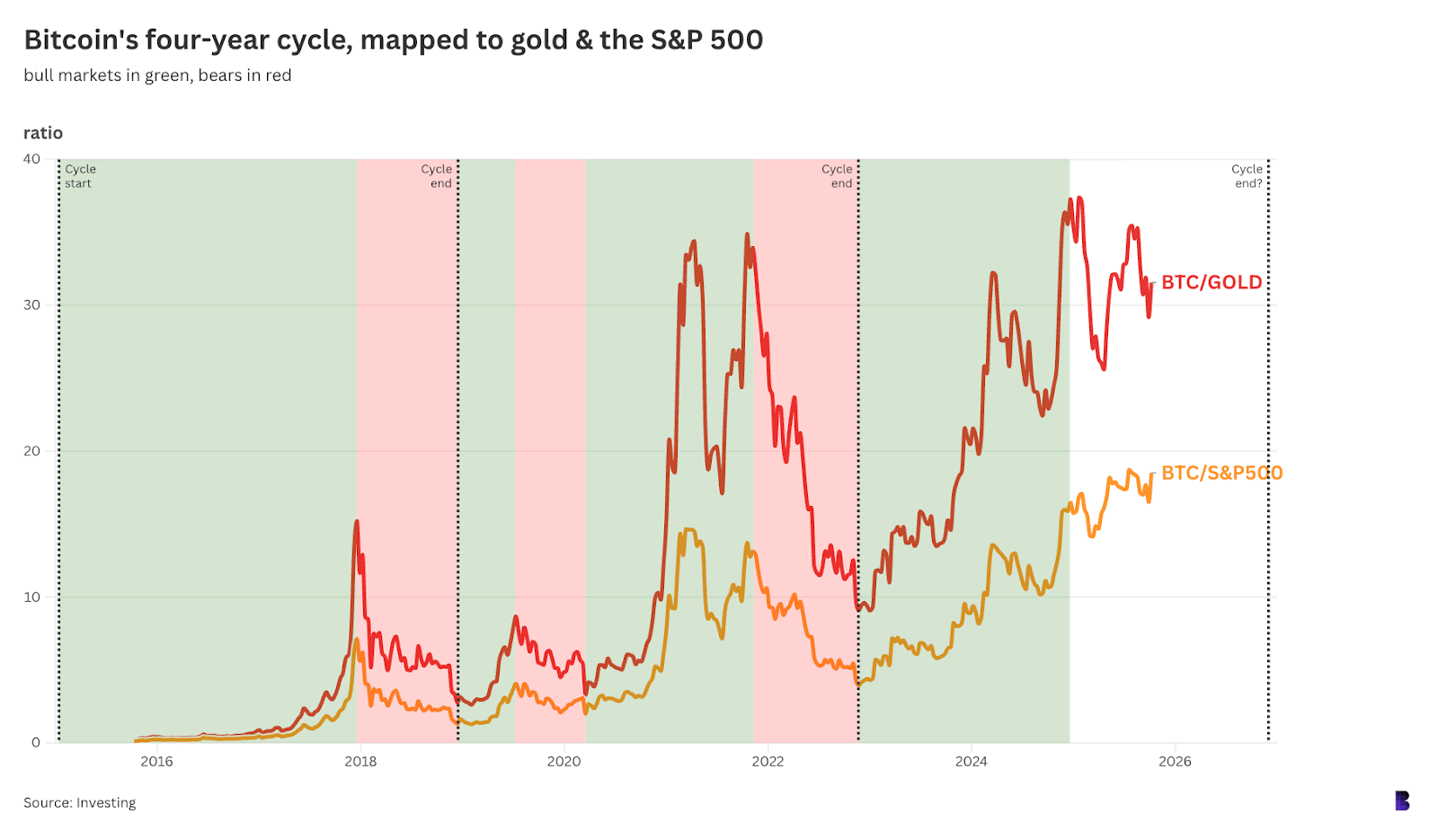- Empire
- Posts
- 💰 A happy accident
💰 A happy accident

Brought to you by:
Crypto is fascinating, if for no other reason than it has been willed into existence.
Sure, say the same thing about gold or oil. There would be no gold or oil industries had humans not willed oil rigs and gold mines into existence, either.
Okay. But gold and oil were around since long before the rigs and mines. It’s not like bitcoin was sitting in cyberspace, undiscovered, waiting for Satoshi to find it buried in the source code for TCP/IP.
Even then, Satoshi had to seek out others who agreed that bitcoin was worth anything at all, let alone the electricity it cost to mine it.
⛓️💥 Break the cycle
Crypto’s entire $4.4-trillion landscape has been built on top of that Original Belief.
And just like how Nietzsche philosophized that humans were driven by a primary force, the Will to Power, crypto markets are driven by a similarly singular force: the Will to Speculate.
Speculation, by definition, is the forming of opinions about what has happened, or what might happen, without knowing all the facts.
Get enough traders and investors forming the same opinions and the markets will reflect them right back, culminating in what skeptics might call a highly profitable mass hysteria event (we just call them bull markets).
How do you unwind those beliefs that are now entrenched in the crypto mindset? It’s easy when the beliefs are new and exciting: Centralized lending was hot until BlockFi, Celsius and the rest blew up, which quickly turned the bull case for that corner of crypto into a faux pas.
Same with over-collateralized algorithmic stablecoins — interest disappeared almost overnight once Terra imploded, now replaced by the more sustainable delta-neutral tokens led by Ethena.
So, what about the four-year cycle? The idea that Bitcoin halvings lead to an inevitable supply crunch and culminate in a bull market peak around one year later has been a bedrock for market analysis in crypto.

It’s easy to grasp how the halving directly influenced capital flows through the ecosystem in, say, 2016. Bitcoin made up more than 80% of the market, compared to less than half right now, and it was much shallower than today.
Outside interest in Bitcoin had also ramped up significantly around the 25 BTC-to-12.5 BTC halving, which put the asset in prime supply shock territory in the second half of 2017.
These days, with a market this deep, the difference between 6.25 BTC and 3.125 BTC per block is negligible. Which is why there has been constant debate over the past year or so about whether the four-year cycle is over, broken, or still intact. (ICYMI, check out Pantera founder Dan Morehead’s interview on the Empire podcast for his thoughts, which essentially boil down to: The cycle persists, but the impact of the halvings is significantly diminished).
Perhaps, the four-year cycle is now a five-year cycle.
Everyone and their mom is planning on selling "the top" next month because they believe the 4 year cycle is still repeating.
As i've been saying since the start of 2025, this will be crypto's first 5 year cycle. The cycle will extend well into 2026 due to things like the SLR
— Jesse Eckel (@Jesseeckel)
3:34 PM • Sep 29, 2025
My personal theory is that this cycle is only different because the market front-ran itself by months in anticipation of bitcoin ETF approval — pushing to a new all-time high before the halving for the first time.
It was an all-time high that should not have been, made on the back of momentum triggered by fake news from Cointelegraph months too soon.
Now we’re on the other side, wondering how far this run is meant to go now that all our modeling has been thrown off. This has simply extended the bull market by six months or so. A happy accident, to quote Bob Ross.
I will say this: It would be very convenient if the four-year cycle is indeed over. Remember that the four-year cycle includes both bull and bear markets.
Cycles start at the beginning of a bull market. Our current bull market kicked off in November 2022, which means the bottom of the bear market should occur at the end of next year.
Bear markets tend to be much shorter than bull markets. So there is still more than enough time for this cycle to play out as standard.

In fact, if we price bitcoin in gold rather than the US dollar, as is shown on the chart above, the current cycle is exactly standard. A new all-time high was set against gold after the halving (at the end of 2024) and not before.
Despite the recent price record against the dollar, bitcoin is still well below its gold ratio peak.
As uncomfortable as it may be, that will need to change very soon if this is to be the final four-year cycle. Which, of course, is monstrously bullish if you believe that to be the case.
Brought to you by:
GEODNET is the decentralized location layer for robotics, delivering centimeter-level precision to farmers, drones, robots, autonomous cars and construction crews. Backed by real customers, recognized by the US Congress, and supported by Multicoin Capital, Pantera and many other leading web3 investors, GEOD proves DePIN is real utility, not hype. Strong tokenomics reward contributors while payments from enterprises generate GEOD daily burns. Join us in powering decentralization and robotics.

BTC/USD is sitting 1.2% below yesterday’s all-time high of $126,060 after finding support around $123,500.
Tether is again vying for fourth place on market cap leaderboards after minting an additional $400 million USDT overnight, potentially unseating XRP.
ICYMI: Grayscale is the first US issuer to enable staking for a spot ETF with its ETH and ETH Mini trusts.

